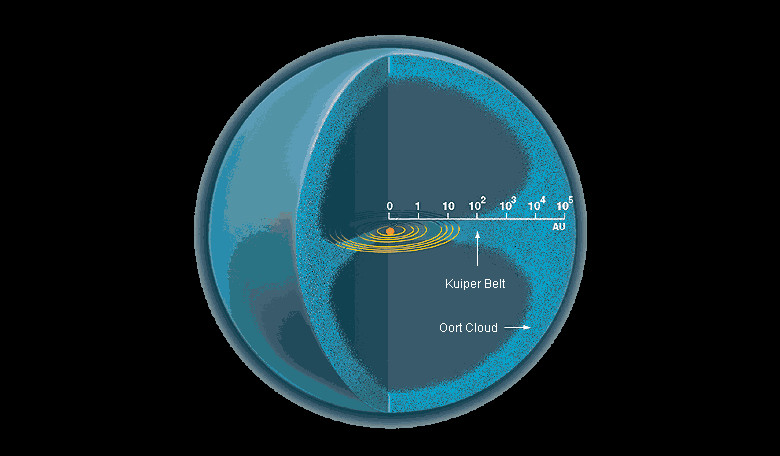Astronomers have discovered a trans-Neptunian object (TNO) – most likely a dwarf planet – at the edges of the Solar System, making it the second-most distant TNO currently known.
Known informally as “DeeDee” short for “distant dwarf” by the team that discovered it (its official name is 2014 UZ224), DeeDee is surpassed in distance only by the dwarf planet Eris – the ninth-most-massive known body directly orbiting the Sun. Found in a region that begins at the outer edge of the Kuiper Belt known as the scattered disk, DeeDee is classed as a detached TNO meaning that is has a dynamically stable orbit that does not get interfered with by Neptune. In the case of DeeDee its orbit is calculated to be stable for billions of years therefore gravitational interactions with Neptune will not affect its orbit, unlike other small, icy objects that are known to populate the disk.
Currently sat at a distance of around 92 astronomical units (AU) away from the Sun, DeeDee will be closest to the Sun at a distance of around 38 AU, in 2142. Eris on the other hand will make its next closest approach to the Sun around 2256.
DeeDee differs from Eris in a number of ways; it is quite small in comparison, DeeDee is only 541 kilometres in diameter whereas Eris at 2326 kilometres in diameter; DeeDee has an inclination of 26 degrees, whereas Eris has a highly inclined orbit at around 44 degrees to the ecliptic and DeeDee is not as bright as Eris. DeeDee is described as being brighter than rocky bodies such as asteroids, and of typical classical Kuiper Belt Objects (KBOs) but as DeeDee is notably smaller than its ice-rich neighbour Eris, DeeDee is thought to be mainly made up of a mixed ice-rock composition.
The large international team that discovered it, whose lead author on the research paper is D W Gerdes from the University of Michigan, USA, found DeeDee using data from the Dark Energy Survey (DES), with followup measurements by the Atacama Large Millimetre/Submillimetre Array (ALMA).
The Dark Energy Survey is an optical survey of 5000 square degrees of the southern sky and despite being used primarily for cosmological purposes, its broad off-ecliptic coverage means it is very well-suited to spotting objects within the scattered disk and other high-inclination TNO populations from the inner Oort cloud.
Once identified, ALMA was then used to measure the object’s thermal emission. The team note in their research that “the ALMA facility is easily capable of radiometric detection of a 500 km body at > 90 AU distance. Hence it will be possible to establish sizes and albedos for nearly every body detectable in the visible by DES and similar surveys.”
In other words, it is likely that DeeDee is one of the first in a probable long line of new discoveries.
For more information on this research see: https://arxiv.org/pdf/1702.00731.pdf











